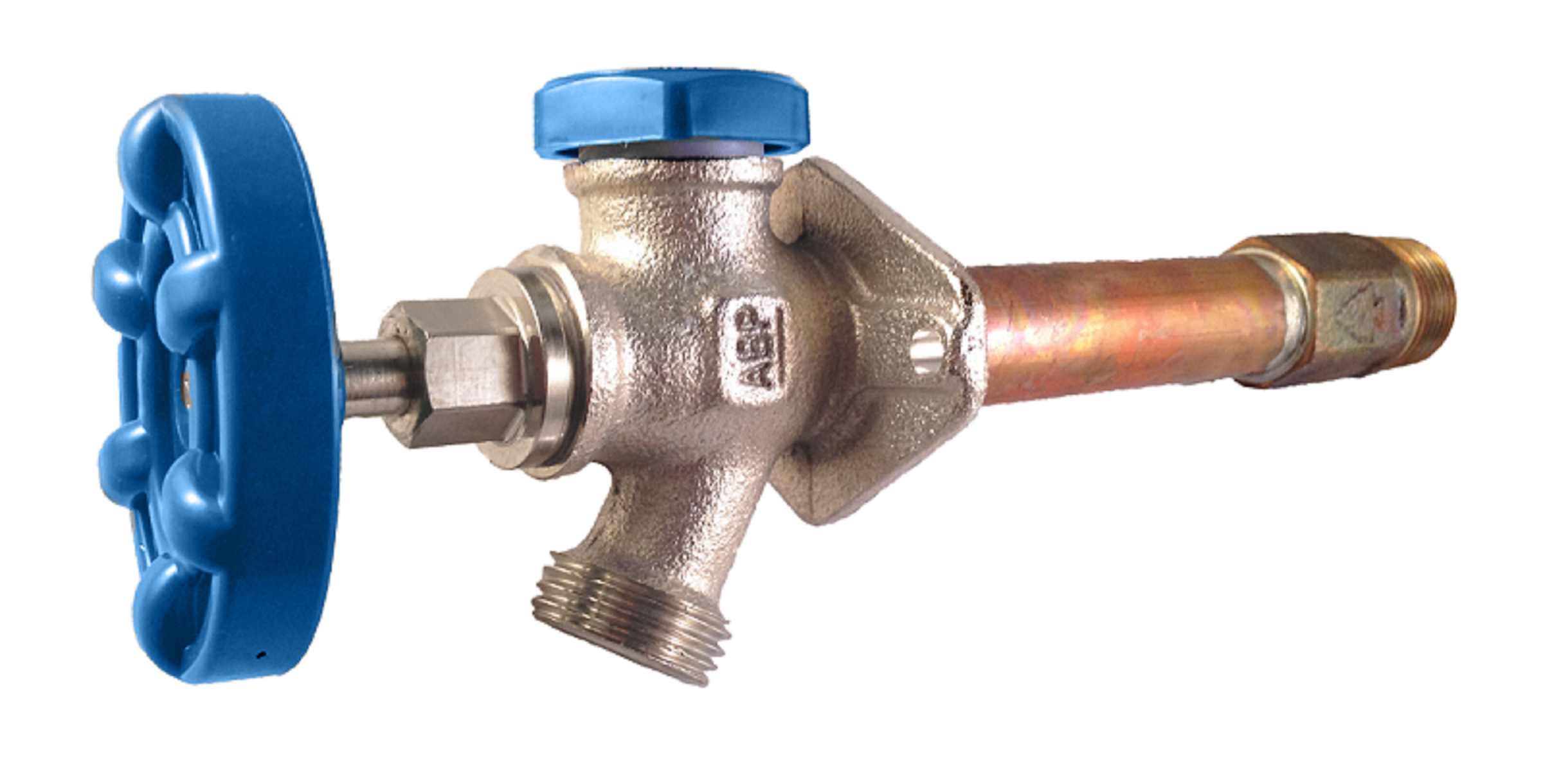
One of the biggest fears’ homeowners living in areas that experience cold or freezing weather is burst pipes. Pipes can bust when they are not drained properly and water freezes in them, potentially causing thousands of dollars worth of damage to your home. Homeowners only had one option when it came to protecting their homes – frost-proof wall hydrants. Arrowhead Brass is excited to introduce our newest product offering, the ICEBREAKER! The ICEBREAKER is a one-of-a-kind wall hydrant that protects your home from damage to your pipes from freezing water. Curious about how it works? Check out below to learn more.
How does it work?
The ICEBREAKER Freeze-Proof Wall Hydrant is not like standard wall hydrants. Standard frost-proof wall hydrants help protect your home and water supply from cold weather by shutting off the flow of water at the heated space in your home, but these standard wall hydrants provide no protection from freezing water. The ICEBREAKER has a patented blue vent mechanism that will burst outside your wall to prevent water damage inside your home.
The ICEBREAKER vent prevents the copper tube from rupturing in the event of freeze and is located outside the wall. If freezing does occur, the ICEBREAKER vent will burst to relieve pressure caused by freezing ice and protect the wall hydrant from damage. PLUS, a burst ICEBREAKER vent is easily replaceable, helping you save on expensive repair costs.
Lead-free for your Health
Your health is important to us; that is why the ICEBREAKER Freeze-Proof Wall Hydrant is lead-free. Why is lead-free important? According to the CDC, a buildup of lead in the human body can result in life-threatening illnesses and even death. Children 6 years and younger are especially vulnerable to lead poisoning, which can severely affect mental and physical development. Therefore, having lead-free valves, pipes, connections, and fittings for your home is so important.
Back-flow prevention versus anti-siphon:
The term “backflow preventer” is an umbrella term that covers the mechanisms used for ensuring that water does not reenter the public water system. An anti–siphon valve is a specific kind of backflow preventer, making it a subcategory of the umbrella term. Another common term is “hose vacuum breaker,” which specifically refers to a backflow prevention device installed onto or built inside hose bibs or frost-proof wall hydrants on the exterior of your home.
What is a backflow prevention device? A backflow prevention device is used to protect drinking water from contamination caused by dirty water siphoning or backflowing into your water system. In water distribution systems, the water is generally held at a higher pressure to allow the water to flow through faucets, showers, or other fixtures. When a water pipe breaks, the pipe freezes, or demand from the water system is unexpected (for example, when multiple fire hydrants open), the water pressure can drop. Decreased pressure in the pipeline can allow contaminated water from soil, storage, or other sources to be drawn into the system.
Backflow preventers, hose vacuum breakers, and anti-siphon valves are one-way valves that prevent potentially contaminated water from flowing back into the potable (drinkable) water source.
Arrowhead Brass Arrow-Breaker Products:
Arrowhead Brass’s complete line of Arrow-Breaker® Hose Bibs and Frost Proof Hydrants come with Integrated (Built-In) backflow prevention. The first of its kind, Arrow-Breaker® technology prevents back-siphonage and protects your water supply without flow restrictions.
An integral unit, the All-In-One Arrow-Breaker® eliminates the need for “thread-on” vacuum breakers and the associated flow-loss. The Arrow-Breaker® is IAPMO listed and in compliance with ASSE standards.
How to protect your home from water damage
Regular maintenance and review of your plumbing systems is an important part of preventing future water damage.
- Inspect appliance hoses and faucets. Make it a habit every year to check hoses leading to water heaters, dishwashers, washing machines, and refrigerator icemakers. Immediately replace any hoses that have cracks or leaks and replace all hoses every five to seven years.
You may also want to invest in a water leak monitoring and shut-off system that can alert you to any leakage issues.
- Inspect showers and tubs. Check the seal and caulking around showers and tubs to ensure they are watertight and reseal if necessary.
- When away for an extended time:
- Shut off the water supply to the washing machine and never leave the house while the washer or dishwasher is running.
- If your home or building could experience freezing weather while you are away, be sure to disconnect all garden hoses from your exterior valves and keep your thermostat on and set to above 55 degrees. Failure to do so could lead to damage from freezing and burst pipes.
- Shutting off the water main to the building and draining the system is a fine idea but be cautious. Appliances, like refrigerators with built-in drinking water dispensers, may automatically drain when the water is off and can open and drain the water out into the house.
- Know the location of the main water shut-off valve in your home. A damaged hose or a burst pipe can send water gushing into your home. Locating and shut off the main water supply quickly will save stress, money, and time.
- Install an emergency pressure release valve in your plumbing system. This will protect against the increased pressure caused by freezing pipes and can help prevent your pipes from bursting. This is where the ICEBREAKER comes in.
- Check plumbing and heating pipes. Look closely for cracks and leaks and have any necessary repairs made immediately.


